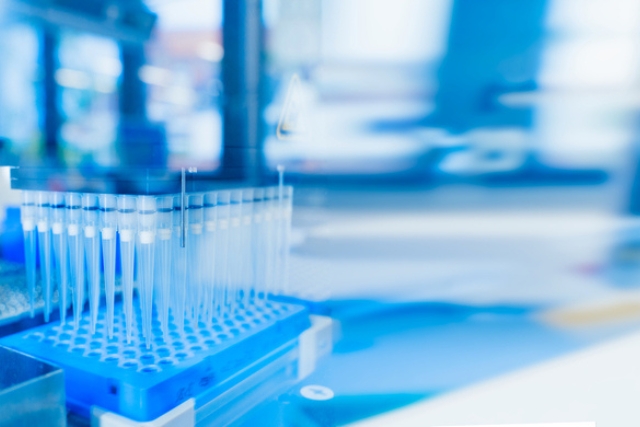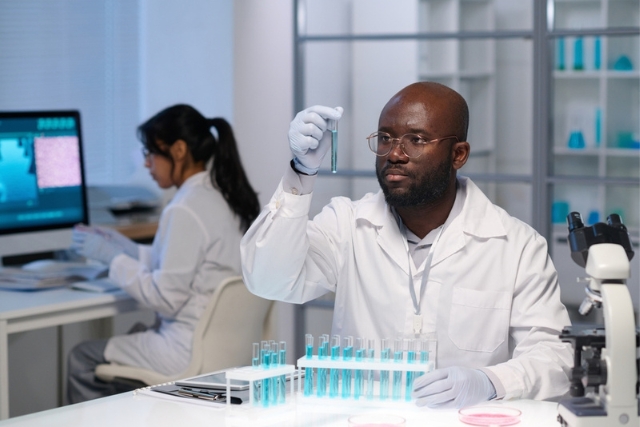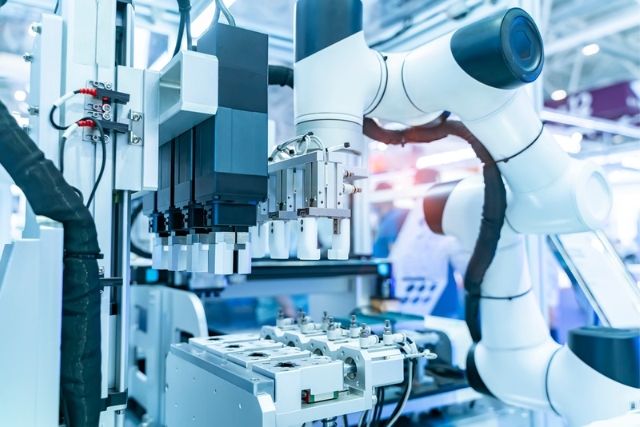
Intelligent automation (IA) combines robotic process automation and artificial intelligence and has already significantly affected numerous sectors. It has helped streamline and accelerate business processes while freeing workers from time-consuming and repetitive tasks to concentrate on higher-level activities.
Life sciences and healthcare are two such industries. Though initially lagging in the adoption of IA, the benefits of automation are now being accepted and implemented at a faster rate across these sectors Because of that; I thought I would take the opportunity to look into how automation benefits life sciences, what it can offer the industry as a whole and the impact it can have on the everyday lives of employees and service users.
Areas that Automation Can Benefit Life Sciences
The opportunities to implement automation in the life sciences industry are numerous and diffuse. They encompass the sector from the initial trialling period through manufacturing and administration all the way up to feedback and assessment. Let’s take a look at them individually.
Automating Clinical Trials
The Covid-19 pandemic inspired a significant leap in clinical trial innovation. The impact of various types of automation was showcased internationally for the first time, giving insight into its support. For example, robot Process Automation (RPA) was able to expand and expedite the data processing capacity of trial facilities to ensure that a more significant number of trials were possible without sacrificing speed.

Working hand in hand with this were the state-of-the-art developments in conversational AI. One of the ways that automation benefited life sciences was the drastic increase enabled by using these innovative chatbots to interview, assess and recruit candidates for clinical trials. In addition, a study from Agent Health found that chatbots can decrease lead procurement costs by up to 27%.
Due to the increased availability and lack of human error, chatbots were able to work more efficiently while creating a fun, ‘gamified’ experience for the end user. The result is not only progress within the life sciences industry but also an expected $11 billion in total cost savings across all sectors by the end of 2023.
Document Storage and Processing
Due to the nature of the industry, life sciences sectors are often highly regulated. As a result, healthcare and clinical research organisations are required to store and process large amounts of information and documentation, much of which is highly confidential. With the much-needed tightening of data-use regulations gaining traction internationally, the ability of these organisations to store and process sensitive data safely and efficiently is more important than ever.

Intelligent Document Processing (IDP) is a form of automation used in the life sciences industry. It can convert structured and semi-structured data from scanned or electronic documents into digital records. Machine learning and artificial intelligence play a significant part in this role, allowing the IDP process to classify and categorise the data using several tools. Self-learning enables IDP innovations to extract information using semantic text analysis while escalating undecipherable exceptions to a human employee for clarification.
Back Office Automation
Linked to tasks like data processing are numerous back-office functions that can prove time-consuming for employees, as well as negatively impacting their morale. For the life-sciences and healthcare industries, back-office systems are more critical than ever.
The financial difficulties faced by healthcare providers during the Covid-19 pandemic made modernisation not only an economic benefit but an operational necessity. To support this, the UK Government published a paper in November last year explaining how the Life Sciences Vision can utilise the UK’s position as a forward-thinking economy that embraces technology. It would allow pressures on back office functions in finance, procurement and HR to make a significant difference to the overall efficiency and reduce the time research professionals must spend on administration.
Pharmaceutical Manufacturing
As with many other sectors, faster and more efficient manufacturing is an excellent opportunity for automation in the life sciences industry. Automation and robotics can result in the manufacturing of drugs having higher levels of safety, speed and efficiency than unassisted human employees. Automation solutions can eliminate human errors in the weighing, blending and packaging pharmaceutical products while facilitating tracking and tracing of those products through automated tech. These developments include computerised batch records and radio frequency identification solutions, that make monitoring the movement, efficacy and safety of pharmaceutical problems more straightforward.

By maximising the benefits of automation in the life sciences industry, businesses could also make the most of the new advent of personalised medicine. Powered by a better understanding of genetics and genomics, more doctors are providing better levels of treatment thanks to streamlined medication.
The consensus is that automation is vital to personalised medicine, as it enables round-the-clock processing and faster and more effective genome sequencing. Without the advantages of automation and robotics, researchers would be slowed down by the huge workload associated with manually testing each individual’s genome. Automation, however, keeps costs low and increases operational efficiency.
Medical Device Manufacturing
Similarly to the pharmaceutical engineering, automation in the manufacturing of medical devices can also offer significant benefits. By utilising AI, medical robots, machine learning technologies and digitisation, the medial device industry is able to produce a greater amount at a lower cost. According to research from Grand View, sales of medical equipment are forecast to continue to grow until at least 2027, meaning the demand for equipment will remain high.
Not only does AI and automation increase the volume and cost efficiency of device manufacturing, but it also makes the process less prone to error. An advantage of automation over human manufacturing is the drastically reduced chances of mistakes that can result in increased monetary and time expenses.
Automate your business with Research and Development (R&D) Tax Credits
Developing automation and AI in the life sciences industry could be a great application of a business’ R&D tax credits. Many of the examples discussed in this article, such as robotics and software development for Back Office purposes, can fall into the criteria for R&D tax credits.
Many businesses do not claim the R&D Tax Credits that they are due, primarily down to being unaware that they have got a valid claim. This can be a severe setback for businesses of any size, especially SMEs.
Not everyone has the information required to know when and how to claim tax back for improving production processes, which is why I offer my expertise in the area.
If you want to make the most of your R&D Tax Credits, get in touch for a no-obligation call or video discussion.

